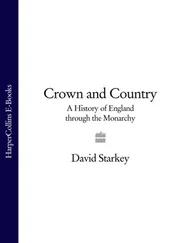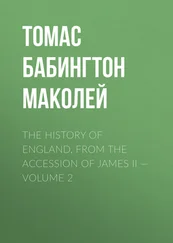Samuel Gardiner - A Student's History of England, v. 2 - 1509-1689
Здесь есть возможность читать онлайн «Samuel Gardiner - A Student's History of England, v. 2 - 1509-1689» — ознакомительный отрывок электронной книги совершенно бесплатно, а после прочтения отрывка купить полную версию. В некоторых случаях можно слушать аудио, скачать через торрент в формате fb2 и присутствует краткое содержание. Издательство: Иностранный паблик, Жанр: История, foreign_antique, foreign_prose, на английском языке. Описание произведения, (предисловие) а так же отзывы посетителей доступны на портале библиотеки ЛибКат.
- Название:A Student's History of England, v. 2: 1509-1689
- Автор:
- Издательство:Иностранный паблик
- Жанр:
- Год:неизвестен
- ISBN:нет данных
- Рейтинг книги:3 / 5. Голосов: 1
-
Избранное:Добавить в избранное
- Отзывы:
-
Ваша оценка:
- 60
- 1
- 2
- 3
- 4
- 5
A Student's History of England, v. 2: 1509-1689: краткое содержание, описание и аннотация
Предлагаем к чтению аннотацию, описание, краткое содержание или предисловие (зависит от того, что написал сам автор книги «A Student's History of England, v. 2: 1509-1689»). Если вы не нашли необходимую информацию о книге — напишите в комментариях, мы постараемся отыскать её.
A Student's History of England, v. 2: 1509-1689 — читать онлайн ознакомительный отрывок
Ниже представлен текст книги, разбитый по страницам. Система сохранения места последней прочитанной страницы, позволяет с удобством читать онлайн бесплатно книгу «A Student's History of England, v. 2: 1509-1689», без необходимости каждый раз заново искать на чём Вы остановились. Поставьте закладку, и сможете в любой момент перейти на страницу, на которой закончили чтение.
Интервал:
Закладка:
2. The Acts of Treason and Supremacy. 1534.– In 1534Parliament also passed a new Act of Treasons which made it high treason to wish or practise harm to the king, the queen, and their heirs, to use words denying their titles, or to call the king a 'heretic, schismatic, tyrant, infidel, or usurper of the crown.' Later in the same year, but in a fresh session, Parliament passed the Act of Supremacy, which confirmed the title of Supreme Head on earth of the Church of England, a title very similar to that to which the king had obtained the qualified assent of the clergy in 1531(see p. 386). From that time anyone who denied the king to be the Supreme Head of the Church of England was liable to a traitor's death.
3. The Monks of the Charterhouse. 1534.– It can hardly be doubted that Henry's chief adviser in these tyrannical measures was the able and unscrupulous Cromwell. It was Cromwell's plan to exalt the royal authority into a despotism by means of a subservient Parliament. He was already Henry's secretary; and in 1535was appointed the king's Vicar-General in ecclesiastical matters. He was quite ready to push the Acts of Parliament which had recently been passed to their extreme consequences. His first object was to get rid of the Friars Observant, who had shown themselves most hostile to what they called in plainness of speech the king's adultery. All their houses were suppressed, and some of the inmates put to death. Then Cromwell fell on the London Charterhouse, 3the inmates of which had been imprisoned in the year before simply for a refusal to take the oath of the Act of Succession, though they had not uttered a word against the king's proceedings. They could now be put to death under the new Treason Act, for denying the king's supremacy, and many of them were accordingly executed after the usual barbarous fashion, whilst others perished of starvation or of diseases contracted in the filthy prisons in which they were confined. "I profess," said the Prior, Houghton, "that it is not out of obstinate malice or a mind of rebellion that I do disobey the king, but only for the fear of God, that I offend not the Supreme Majesty; because our Holy Mother the Church hath decreed and appointed otherwise than the king and Parliament hath ordained." Houghton and his fellows were as truly martyrs as Frith had been. They at least had sown no seeds of rebellion, and they died because a tyrannical king insisted on ruling over consciences as well as over bodily acts.
4. Execution of Fisher and More. 1535.– Fisher and More were the next to suffer on the same charge, though their sentences were commuted to death by beheading. More preserved his wit to the last. "I pray you," he said as he mounted the scaffold, "see me safe up, and for my coming down I will shift for myself." After he had knelt to place his head on the block, he raised it again to move his beard aside. "Pity," he muttered, "that should be cut that has not committed treason."
5. The Dissolution of the Smaller Monasteries. 1536.– Money never came amiss to Henry, and Cromwell now rooted himself firmly in his master's favour by pointing out to him fresh booty. The English monasteries were rich and weak, and it was easy to trump up or exaggerate charges against them. Cromwell sent commissioners to inquire into their moral state ( 1535), and the commissioners, who were as unscrupulous as himself, rushed round the monasteries in such a hurry that they had no time to make any real inquiry, but nevertheless returned with a number of scandalous tales. These tales referred to some of the larger monasteries as well as the smaller, but, when Parliament met in 1536, Henry contented himself with asking that monasteries having property worth less than 200 l. a year should be dissolved, and their estates given to himself, on the ground that whilst the smaller ones were dens of vice the larger ones were examples of virtue. Parliament granted his request, and the work of spoliation began. There can be no doubt that vice did exist in the monasteries, though there was not so much of it as the commissioners asserted. It would have been indeed strange if innocence had been preserved in communities living in enforced celibacy, with no stress of work to occupy their thoughts, and with the high ideals of their profession neglected or cast aside. On the other hand, the monks were easy landlords, were hospitable to the stranger and kindly to the poor, whilst neither the king himself nor those to whom he gave or sold the lands which he acquired cared for more than to make money. The real weakness of the monks lay in their failure to conciliate the more active minds of the age, or to meet its moral needs. The attack upon the vast edifice of Henry's despotism in Church and State could only be carried on successfully by the combined effort of men like the scholars of the Renascence, whose thoughts were unfettered, and of those who, like the Protestants, were full of aggressive vigour, and who substituted for the duty of obedience the duty of following their own convictions.
6. The Execution of Anne Boleyn. 1536.– Before the end of 1536there was a new queen. Henry became tired of Anne, as he had been tired of Catharine, and on a series of monstrous charges, so monstrous as to be hardly credible, he had her tried and executed. Her unpardonable crime was probably that her only living child was a daughter, and not a son. Ten days after Anne's death Henry married a third wife, Jane Seymour. As Catharine was now dead, there could be no doubt of the legitimacy of Jane's offspring, but to make assurance doubly sure, a new Parliament passed an Act settling the succession on Jane's children, and declaring both Mary and Elizabeth illegitimate.
7. The Ten Articles. 1536.– It is probable that when Henry took the title of Supreme Head he intended to maintain the doctrines and practices of the Church exactly as he found them. In 1536the clergy were crying out not merely against attacks on their faith, but against the ribaldry with which these attacks were often conducted. One assailant, for instance, declared the oil used in extreme unction to be no more than the Bishop of Rome's grease or butter, and another that it was of no more use to invoke a saint than it was to whirl a stone against the wind. Many of the clergy would have been well pleased with mere repression. Henry, however, and the bishops whom he most trusted wished repression to be accompanied with reasonable explanations of the doctrines and practices enforced. The result was seen in the Ten Articles which were drawn up by Convocation, and sent abroad with the authority of the king. There was to be uniformity, to be obtained by the circulation of a written document, in which the old doctrines were stripped of much that had given offence, and their acceptance made easy for educated men. Of the seven sacraments, three only, Baptism, Penance, and the Sacrament of the Altar, were explained, whilst the other four – those of Marriage, Orders, Confirmation, and Extreme Unction – were passed over in silence. On the whole the Ten Articles in some points showed a distinct advance in the direction of Lutheranism, though there was also to be discerned in them an equally distinct effort to explain rather than to reject the creed of the mediæval Church.
8. The Translation of the Bible authorised. 1536.– The same tendency to appeal to educated intelligence showed itself in the sanction given by the king and Cromwell in 1536to a translation of the Bible which had been completed in 1535by Miles Coverdale, whose version of the New Testament was founded on an earlier one by Tyndale. It is probable that Henry, in authorising the circulation of this version, thought of the support which he might derive from the silence of the Bible on the Papal claims. The circulation of the Bible was, however, likely to work in a direction very different from that of the Ten Articles. The Ten Articles were intended to promote unity of belief. The Bible, once placed in the hands of everyone who could read, was likely to promote diversity. It would be the storehouse in which Lutherans, Zwinglians, and every divergent sect would find weapons to support their own special ideas. It would help on the growth of those individual opinions which were springing up side by side with the steady forward progress of the clergy of the Renascence. The men who attempted to make the old creed intellectually acceptable and the men who proclaimed a new one, under the belief that they were recurring to one still older, were together laying the foundations of English Protestantism.
Читать дальшеИнтервал:
Закладка:
Похожие книги на «A Student's History of England, v. 2: 1509-1689»
Представляем Вашему вниманию похожие книги на «A Student's History of England, v. 2: 1509-1689» списком для выбора. Мы отобрали схожую по названию и смыслу литературу в надежде предоставить читателям больше вариантов отыскать новые, интересные, ещё непрочитанные произведения.
Обсуждение, отзывы о книге «A Student's History of England, v. 2: 1509-1689» и просто собственные мнения читателей. Оставьте ваши комментарии, напишите, что Вы думаете о произведении, его смысле или главных героях. Укажите что конкретно понравилось, а что нет, и почему Вы так считаете.












